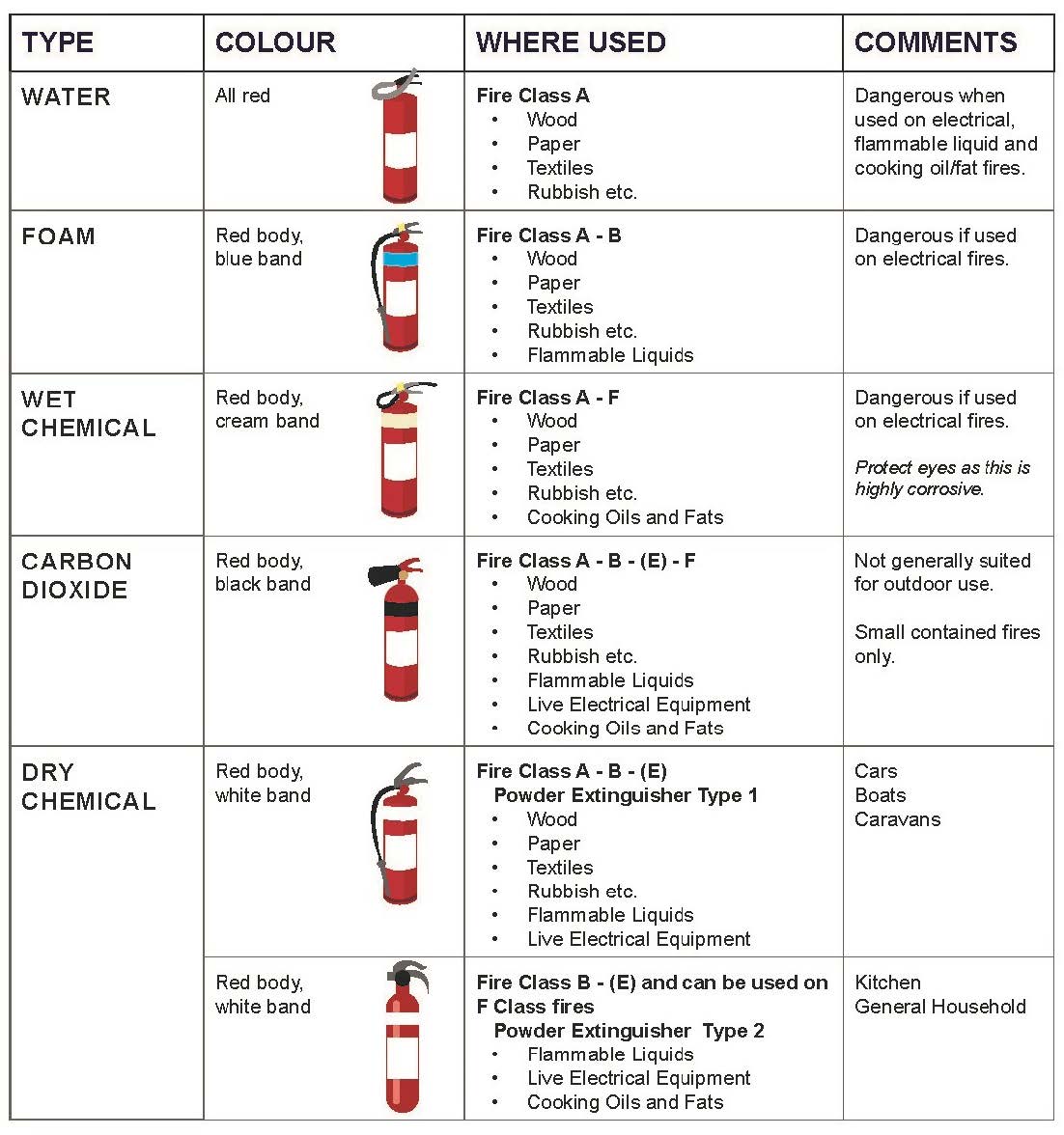
Download the PDF file: Fire Extinguishers for Domestic Use
A fire extinguisher is a first attack tool for use in the early stages of a fire. It should only be used on a small fire (no larger than a waste paper basket) and by someone who is confident and physically capable of using the extinguisher.
As per “cooking safety” consider advising the public where extinguishers can be purchased.
When you attempt to extinguish a fire:
- do not put your life at risk
- whenever possible call for support and have someone else call Triple Zero (000)
- ensure that all other people have been evacuated from the house
- make sure that you are using the right method or fire extinguisher to put out the fire, especially if electricity or burning fat is involved.
The Right Tool For The Job
- The safest and most efficient way to extinguish a contained cooking fire (e.g. a fat fire in the pan) is by using a fire blanket. See “Home Fire Safety Fact Sheet – Fire Blankets”.
- There are a number of fire extinguishers available to suit the different types of house fires. It must be remembered that there is no single fire extinguisher or extinguishment method which will cover all types of fires.
- In a domestic situation the most common fires are cooking fires so the South Australian Metropolitan Fire Service (MFS) recommends a B:E dry chemical powder extinguisher. The MFS recommends a minimum performance capacity for this extinguisher of 5B:E. This type of extinguisher is suitable for fires involving flammable liquids, and electrical fires as well as cooking oils and fats (Class B, E & F fires). However it is not recommended for fires involving wood, textiles, paper or rubbish (Class A fires). Water from a kitchen tap or garden hose should be used to
extinguish Class A fires. - An A:B:E dry powder extinguisher is also suitable for use in a domestic situation. If you choose this type of extinguisher, the MFS recommend a minimum performance capacity of 1A:5B:E. This type of fire extinguisher is suitable for fires involving wood, textiles, paper or rubbish (Class A fires), flammable liquids (Class B fires) and electrical fires (Class E fires) however it has limited effectiveness on fires involving cooking oils and fats (Class F fires). If you only install an A:B:E extinguisher you must also equip your kitchen with a fire blanket to use as an effective method of extinguishing contained oil or fat fires.
- For cars, caravans and boats the MFS recommends a dry chemical powder fire extinguisher with a minimum rating of 1A:20B:(E).
- Water or a garden hose can be used to put out a small fire where the fuel is wood, paper, textiles or rubbish (Class A fire).
Size
A one kilogram (1kg) dry powder extinguisher is recommended for domestic home use. If the fire cannot be extinguished using a 1kg extinguisher it is too large. You should evacuate everyone from the home and call 000.
Placement
Kitchens are where most domestic fires occur. The fire extinguisher and fire blanket should be mounted near the entrance or exit to the kitchen to ensure an escape route if you can’t put the fire out.
In a car, caravan or boat the extinguisher should be mounted near an exit, in a place where it can be easily accessed and used without putting you in danger from the fire. You should always have an escape route behind you.
Maintenance
At least every six months remove the dry powder extinguisher from its mounting bracket:
- Shake it gently to ensure that the powder within has not compacted.
- Check that the pressure gauge is reading in the green zone to ensure that there is ample gas propellant to make the extinguisher work.
- Check for any other visible damage. Replace the extinguisher if you have any concerns. Replace the extinguisher, or have it serviced and pressure tested, when it reaches 10 years of age.
- On boats check for saltwater corrosion.
For all other types of fire extinguisher check the pressure gauge six monthly, undertake a visual inspection, follow all other maintenance instructions from the manufacturer and have the extinguisher tested or replaced after 10 years.
Know How To Use The Fire Extinguisher
Familiarise yourself with the instructions on the fire extinguisher every time you examine it. An emergency is not the time to read extinguisher instructions.
See Home Fire Safety Fact Sheet - Extinguishing a Fire
See other Fact Sheets:
Fire Blankets, Recreational Marine Fire Safety, Recreational Vehicles, and Vehicle Fires.

For further advice:
Email: mfs.communitysafety@eso.sa.gov.au
Phone: (08) 8204 3611
Country Callers: 1300 737 637

